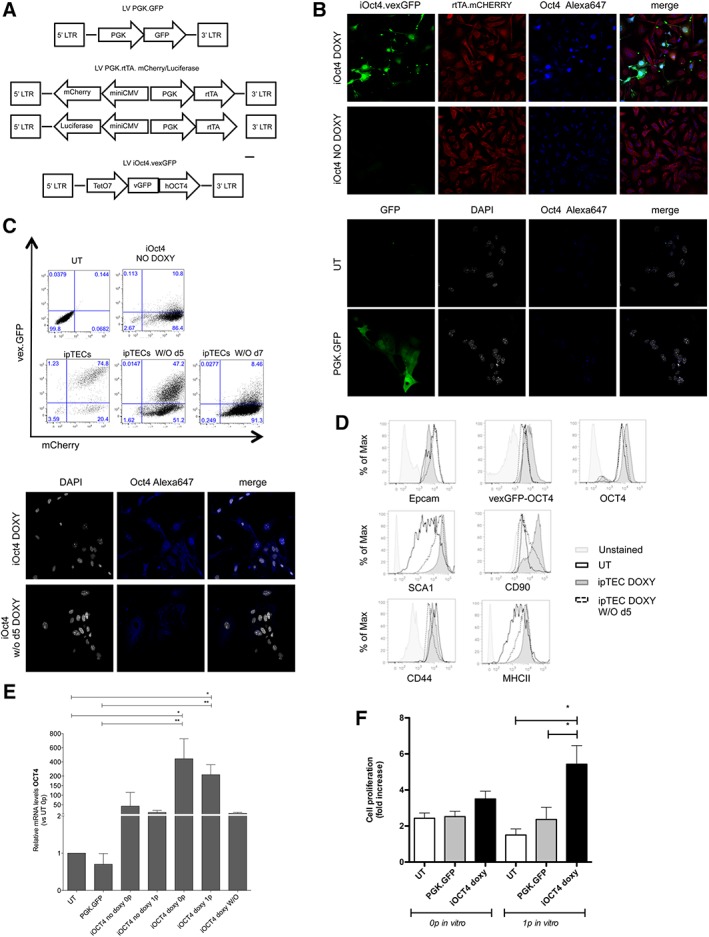Figure 2.

Inducible expression of Oct4 in adult thymic epithelial cells (TECs) improves its in vitro proliferation and induces the expression of progenitor markers. (A): Maps of the lentiviral vectors (LVs) used in this paper. (B): Freshly isolated TEC were transduced with PGK.GFP LV or with LVs for the inducible expression of Oct4 cultured with (iOct4 DOXY) or without doxycycline (iOct4 NO DOXY). Untransduced TEC (UT) was used as control. Oct4 immunofluorescence analyses were performed 7 days after transduction. (C): Flow cytometric (upper panel) and immunofluorescence (lower panel) analyses for the expression of OCT4‐vex.GFP 5 or 7 days after doxycycline removal from the culture medium (iOCT4 TECs washout d5 and d7, respectively). (D): Flow cytometric analyses for the expression of stem‐progenitor markers (Thy1.2/CD90, Sca1) and for the expression of molecules important for thymus development and functionality (Epcam, MHC II, and CD44). (E): RT‐PCR analyses for the expression of Oct4 (one‐way analysis of variance [ANOVA] with Dunn's multiple comparison test; p = .0001. UT n = 4 replicates; PGK.GFP n = 4 replicates; iOCT4 no doxy 0p = 5 replicates; iOCT4 no doxy 1p = 3 replicates; iOCT4 doxy 0p = 4 replicates; iOCT4 doxy 1p = 5 replicates; iOCT4 doxy washout = 7 replicates). (F): TECs in vitro expansion has been evaluated as fold increase in their proliferation rate. Cultures were counted every 3 days. Fold increase of cells was determined by total cell number recovered divided by the initial cell number plated (one‐way ANOVA with Newman–Keuls multiple comparison test. p = .0791 and p = .0042 for in vitro passage 0 and passage 1, respectively).
